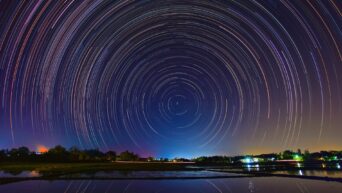
Credit: Getty Images
It’s like fireworks, except it hopefully won’t explode.
If there’s one thing you can count on the Fourth of July for, it’s incredible spectacles of lights and sound. Of course, due to… you know, there probably won’t be nearly as many large, public fireworks shows this year, if any at all. That’s okay, though; if we can’t get any big light shows going to celebrate the Fourth, then nature can provide in our place.
This year, the night sky will be graced by July’s signature Buck Moon on the Fourth of July (and slightly into the fifth, depending on your time zone). The moon will be visible from just about anywhere in the world, but a lucky few countries will also get to see an accompanying penumbral lunar eclipse. A penumbral lunar eclipse occurs when the sun, Earth, and moon are all in perfect alignment, which creates a shadow of the Earth on the moon’s surface. Southern and Western Europe, parts of North and West Africa, parts of North America, and South America will all be able to see this fascinating astral event.

Credit: Robert Alexander/Getty Images
The Buck Moon’s name comes from male deer, or bucks, shedding their large antlers after mating season and beginning the summer process of growing new ones. If you were hoping for weredeer, then I’m sorry to disappoint you.
The Buck Moon should be visible all night on Saturday night up until the wee hours of Sunday morning. So after you’ve spent the day celebrating your independence, preferably from the safety of your own backyard, gaze up into the night sky and spare a thought to the vast, infinite cosmos.
































